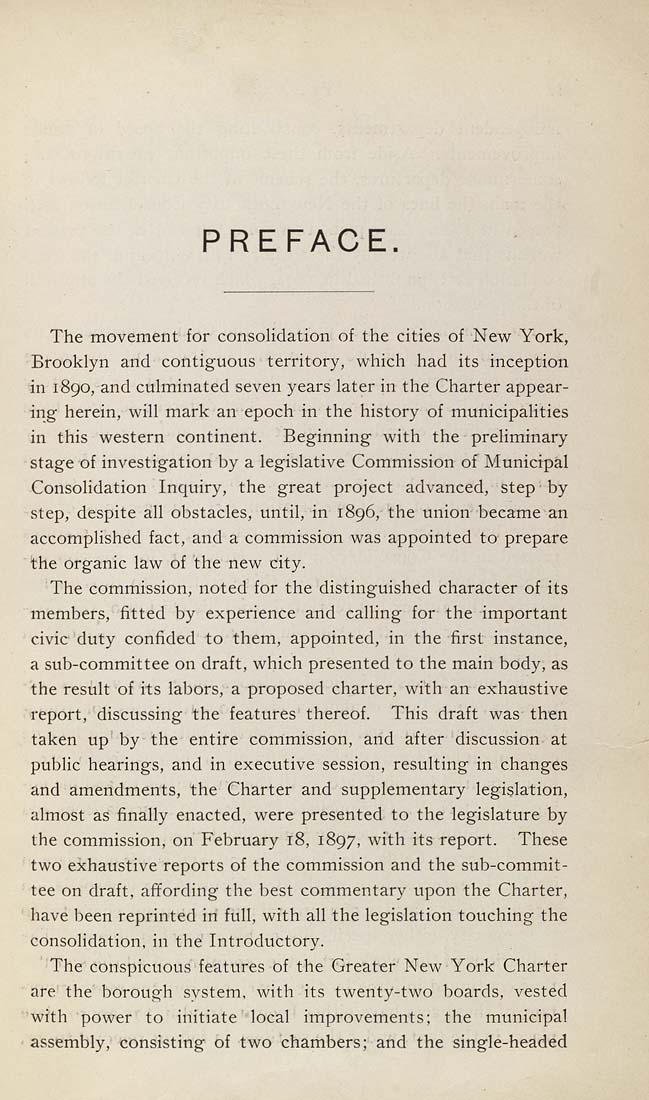PREFACE,
The movement for consolidation of the cities of New York,
Brooklyn and contiguous territory, which had its inception
in 1890, and culminated seven years later in the Charter appear¬
ing herein, will mark an epoch in the history of municipalities
in this western continent. Beginning with the preliminary
stage of investigation by a legislative Commission of Municipal
Consolidation Inquiry, the great project advanced, step by
step, despite all obstacles, until, in 1896, the union became an
accomplished fact, and a commission was appointed to prepare
the organic law of the new city.
The commission, noted for the distinguished character of its
members, fitted by experience and calling for the important
civic duty confided to them, appointed, in the first instance,
a sub-committee on draft, which presented to the main body, as
the result of its labors, a proposed charter, with an exhaustive
report, discussing the features thereof. This draft was then
taken up by the entire commission, and after discussion at
public hearings, and in executive session, resulting in changes
and amendments, the Charter and supplementary legislation,
almost as finally enacted, were presented to the legislature by
the commission, on February 18, 1897, with its report. These
two exhaustive reports of the commission and the sub-commit¬
tee on draft, affording the best commentary upon the Charter,
have been reprinted in full, with all the legislation touching the
consolidation, in the Introductory.
The conspicuous features of the Greater New York Charter
are the borough system, with its twenty-two boards, vested
with power to initiate local improvements; the municipal
assembly, consisting of two chambers; and the single-headed
|








